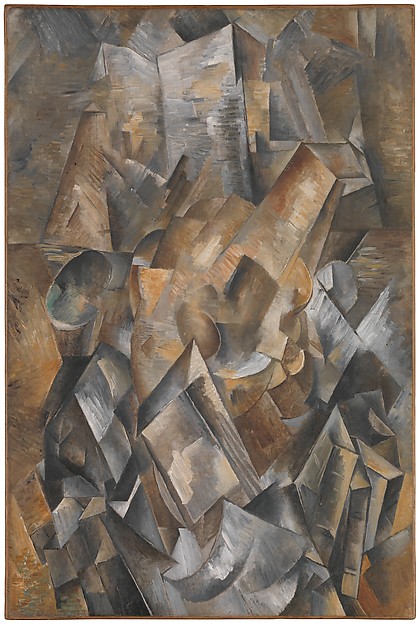
Georges Braque- Still Life with Pitchers, 1932
There is only one valuable thing in art: the thing you cannot explain.
—Georges Braque
The quote above from artist Georges Braque (1882-1963) has been a sort of mantra of mine for most of my career. It was used as the header for the first artist statement that I ever wrote about my work and has hung tight with me since that time. It concisely expressed everything I felt about my work or any work by others that moved me, that there was something beyond explanation, analysis, or rationalization that gave the work life, that gave it meaning.
A truth or reality beneath the surface.
I recently came across a more complete version of the quote, taken from an interview that Braque gave in 1957:
The only valid thing in art is that which cannot be explained. To explain away the mystery of a great painting – if such a feat were possible – would be irreparable harm… If there is no mystery than there is no ‘poetry’, the quality I value above all else in art. What do I mean by ‘poetry’? It is to a painting what life is to man… For me it is a matter of harmony, of rapports, of rhythm and – most important for my own work – of ‘metamorphosis’
I got to say, the longer version is just as compelling to me as the more concise version I’ve known for the past few decades. In fact, one line can stand alone on its own: If there is no mystery than there is no ‘poetry’, the quality I value above all else in art.
It is often easy to list the things we like or dislike in a piece of art, but that never really gives a full accounting of how we react to the work. Or how the work interacts with us.
I have often felt an immediate attraction to a piece of work and can’t fully explain why I feel that way. And I find that I prefer it that way. I don’t need to know why anymore. I could spend a lot of time analyzing the parts of the work– the subject matter, the materials, and the techniques employed.
But it never fully comes down to one thing. There is always something beyond what I think I see that attracts me. It is the mystery, the poetry of the work. The true reality of what is being shown to me.
Or as Braque also stated: Reality only reveals itself when it is illuminated by a ray of poetry.
Hmm…
One of the founders and stars of the Cubist movement, Braque also made his mark in other areas of painting– Impressionism, Fauvism and Expressionism. Yet, even in whatever era he painted, his work was unmistakably his own. A remarkable career.
Let’s look at some of Braque’s work starting with a slideshow set to Mozart’s Piano Concerto No. 21, better known as the Elvira Madigan concerto.











Artist Georges Braques in Paris studio 1948
I don’t know who originated the phrase, but I know that poets like Seamus Heaney and Billy Collins have talked about the ‘surplus of meaning’ that exists in poetry. It’s the “unsaid and unsayable” that keeps any art niggling at the edge of our minds.